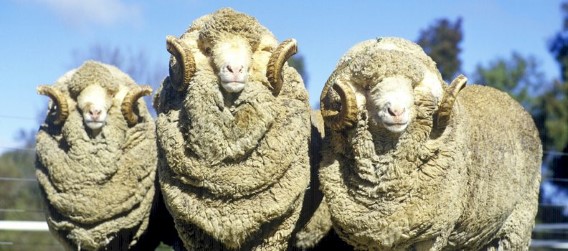Top Info For Deciding On Merino Wool Base Layers For Hiking
Wiki Article
What Is The Difference Between Merino And Regular Wool?
Merino wool comes from Merino sheep. They are well-known for their fine and soft wool. Merino Wool is distinct from regular wool in many ways. Its softness- Merino Wool is softer than regular wool due to the Merino sheep's finer wool fibres. The finer fibers makes the wool less itchy and more comfortable to wear next to your skin.
Merino wool is warm because it traps air inside the fibers. It creates insulation. It's also extremely moisture-wicking and keeps you comfortable even when it's wet.
Durability- Merino wool is more durable than regular wool because of the strength of the Merino wool fibers. This means it is able to endure more wear and tear, and is less likely to break.
Merino Wool is naturally antibacterial and resists odors. This means that it can last longer without acquiring an unpleasant odor.
Breathability Merino wool is extremely and breathable. It allows for moisture to escape and keep you cool and dry during the warmer months.
Merino wool generally has a better quality than regular wool. It is priced higher due to its superior qualities.

What Is The Difference Between Lightweight, Heavyweight, And Midweight Merino Wool Base Layers?
The fabric's thickness and warmth is what makes the difference between light, medium weight, or heavyweight Merino wool base layers. The base layers differ. Lightweight Merino wool base layer are typically constructed from a thin and breathable fabric, which is ideal for warm to cool weather. This type of base layer is perfect for activities that are intense where you are likely to sweat an sweat and require fabrics that are able to absorb the sweat and keep your body cool. These types of fabrics can be used under other layers at lower temperatures as an additional layer.
Midweight Merino wool base layers are made of more dense fabric, which provides more insulation and warmth than lighter base layers. This type of base layer is ideal for moderate-to-low-intensity sports, such as those where you aren't likely to sweat a lot.
Heavyweight Merino wool base layers are constructed with the warmest and most luxurious fabric and are suitable for colder temperatures. This kind of base layer is perfect for low-intensity activities where you are not likely to sweat out like snowshoeing or skiing.
When choosing the most appropriate Merino wool base layer to suit your requirements, take into consideration the weather conditions as well as the level of activity you will be engaging in. A lightweight base layer is suitable for intense activities and cool weather. A mid-weight layer is appropriate for cooler temperatures and moderate - to heavy-intensity sports. A heavy-weight base layer performs best in very cold temperatures and low-intensity activity. You can layer your clothes down or up according to the conditions It is recommended to choose a layer that is slightly heavier than too heavy. Be sure that the base layer is snug and allows for full movement. Go great outdoor clothes at koraoutdoor.com for blog info.

What Makes Merino Blends With Himalayan Yak Wool The Perfect Base Layer To Ski?
Blending Merino wool with Himalayan yak wool is an ideal mix to create a base layer for skiing , as it blends the advantages of both wools. Merino wool has a reputation for being extremely temperature-regulating, moisture-wicking, and soft. Himalayan Yak wool is well-known for its warmth and long-lasting. Combining these two fibers creates an underlying layer that's cool, breathable, and moisture-managed. It's perfect for skiing. Merino wool regulates body temperature and wicks away sweat from your skin, keeping you dry and comfortable. Yak wool provides warmth during colder temperatures and provides an extra layer of insulation. Merino wool mixed with yak wool provides superior durability and resistance against wear and tear. This makes it a great base layer for sporting activities such as skiing. Merino and Himalayan yak wool are combined to create a base layer which provides warmth, moisture management and the ability to breathe. This makes it a great choice for skiing and other cold-weather activities. Go find best mid layer for hiking for website info.

What Is It That Makes Merino And Himalayan Himalayan Yak Wool Better Over Cotton, Polyester And Nylon Alternatives To Ski Clothes?
Merinowool and Himalayanyak Wool is better than nylon, polyester, fleece, nylon and fleece for ski clothes. Warmth - Merinowool and Himalayanyak wool work as excellent insulators. They help keep your warm even in frigid conditions. Merino wool as well as Himalayan Yak wool provide superior insulation. This is in contrast to cotton, nylon, and polyester which are too lightweight.
Moisture management- Merino wool and Himalayan yak wool are highly effective at managing moisture, that means they'll ensure you are dry and comfortable during your ski trip. Both are naturally moisture-wicking. They draw moisture from the skin and move it to the outer layer and then evaporate. This is different from cotton which absorbs humidity and can become uncomfortable and heavy after it's wet.
Breathability Merino wool or Himalayanyak wool is extremely breathable. This lets air to flow freely through their fabric. It assists in controlling body temperatures and prevents overheating. This is crucial for ski clothes since it allows you to be comfortable while you are skiing. However the materials like fleece, nylon, and polyester aren't as air-tight and hold in heat and water which could make you feel uncomfortable and sweaty.
ComfortThe Comfort Merino wool as well as Himalayan Yak wool are incredibly soft and comfortable, making them perfect for wear close to your skin. They are extremely stretchy and flexible that allow for full range of motion and mobility. However, fabrics like nylon and polyester can be rigid and uncomfortable. This could limit your range of motion as well as cause chafing and cause discomfort.
SustainabilitySustainable Merino wool as well as Himalayan Yak wool are natural and sustainable fibers that biodegrade and can be reused. They are therefore more sustainable than synthetics like polyester or nylon, which are made with non-renewable materials that take a longer time to decompose.
In general, Merino wool and Himalayan Yak wool provide a variety of advantages that are superior to polyester, cotton as well as nylon and fleece for ski clothes. They are warm and durable, as well as water-wicking. They are breathable and comfortable. They are an ideal choice for anyone seeking to remain comfortable while skiing.